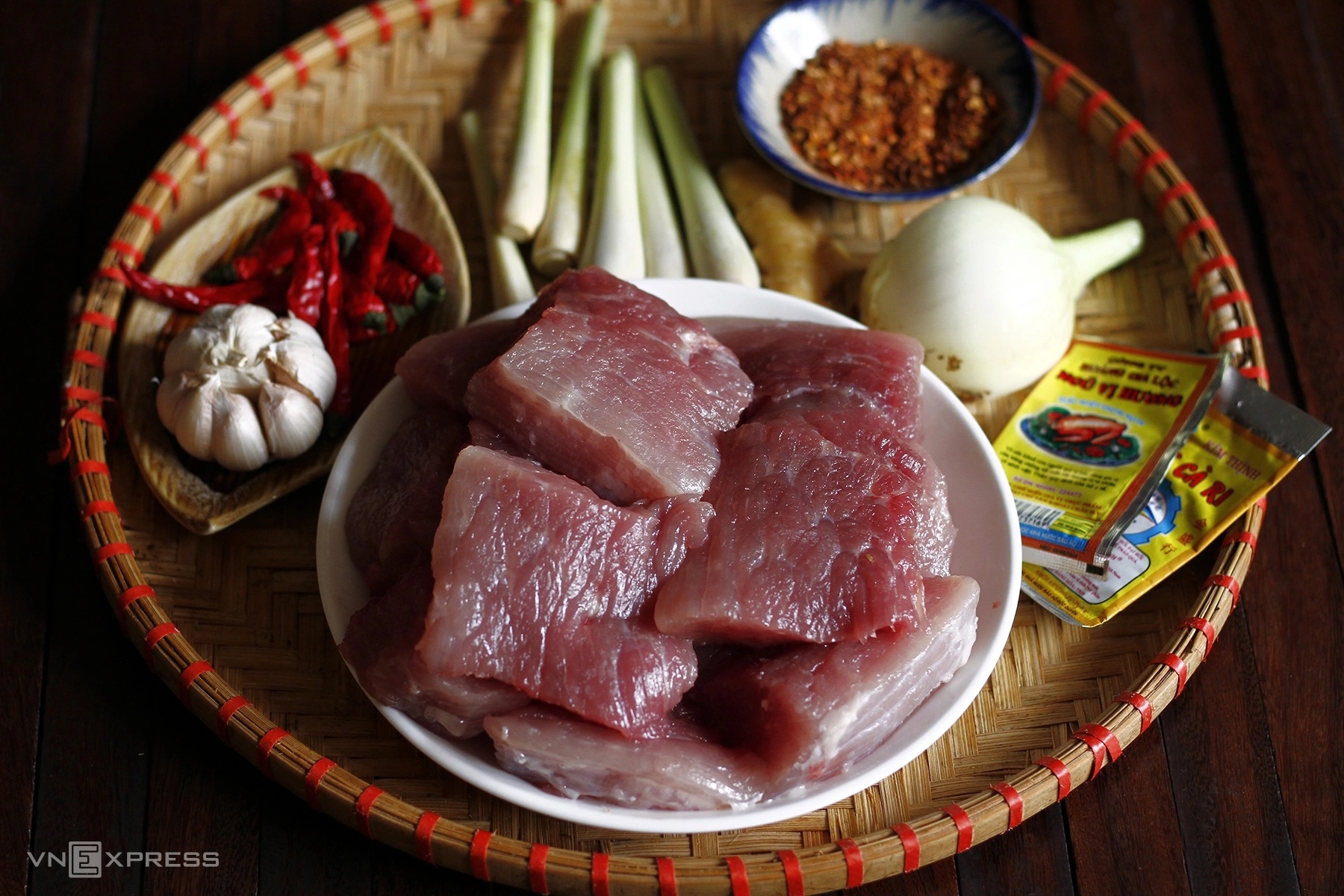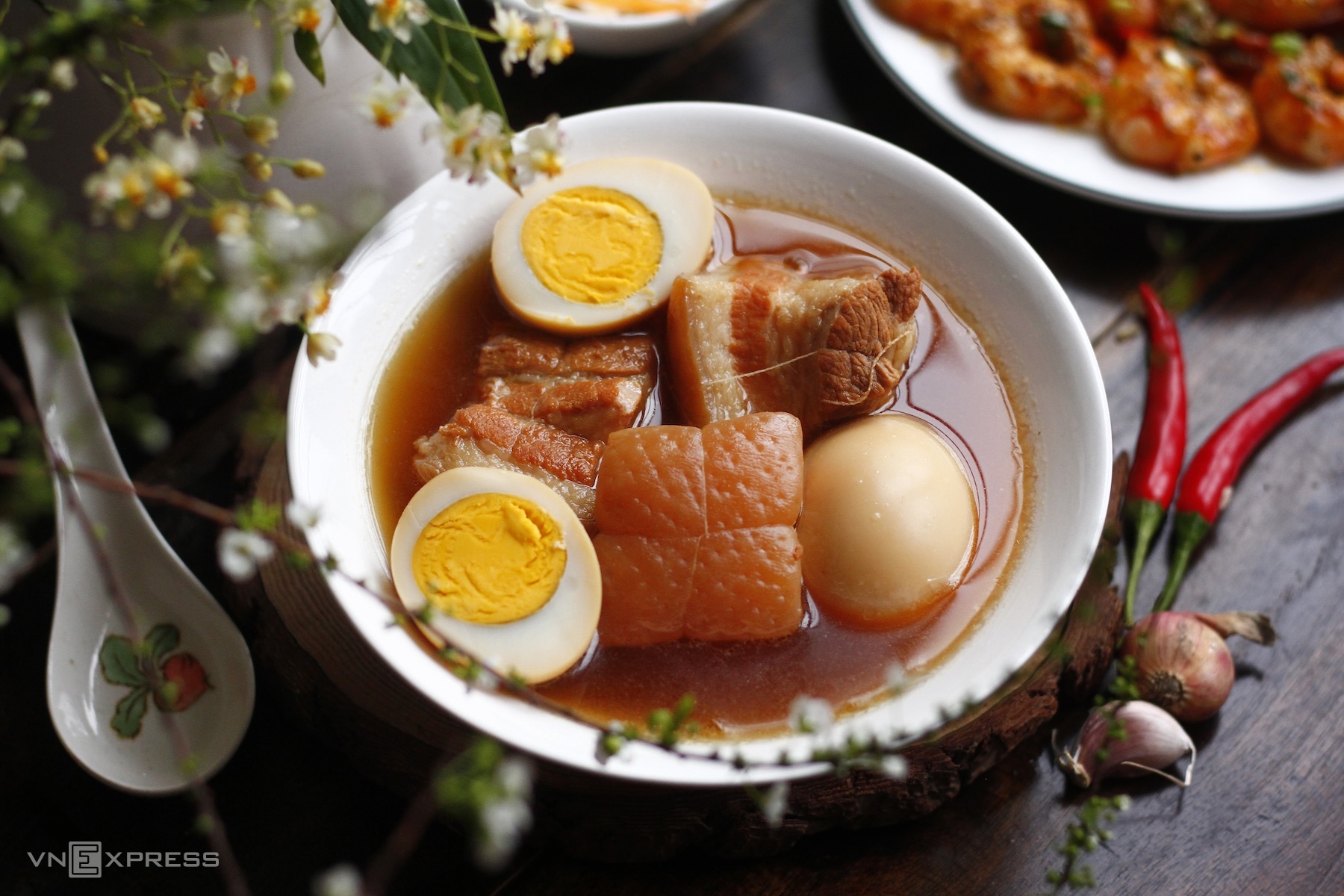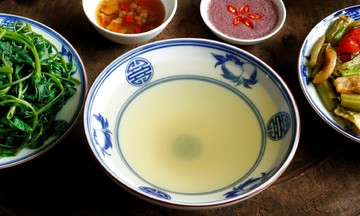In the past, with limited food preservation methods, Vietnamese cooks used spices for both flavor and preservation. Garlic stood out for its aroma and natural antibacterial properties.
Two century-old cookbooks, "The New World of Flavors" published in 1925 and "Culinary Insights" from 1930, detailed garlic's role in various dishes. These texts describe garlic as a pungent, warming spice that detoxifies, disinfects, wards off evil spirits, and relieves bloating. They recommend mincing garlic into meat for nem (fermented pork roll), chao (grilled sausage), and nham (raw minced pork) immediately after slicing to enhance flavor and preservation.
"Culinary Insights" notes garlic's incompatibility with dog meat but makes no mention of any conflict with pork.
 |
Pork and garlic are combined in many dishes. Photo: Bui Thuy |
Pork and garlic are a common and popular pairing in Vietnamese cuisine, especially in naturally fermented dishes. Thanh Hoa nem chua (fermented pork sausage) wouldn't be complete without slices of raw garlic. Phu Tho thit chua (fermented pork) features crushed garlic, creating a distinctive flavor profile. In central Vietnam, tre (fermented pork head and skin) often includes minced garlic for its aroma. In the south, garlic is a staple in braised dishes. Thit kho hot vit (braised pork with duck eggs) is typically marinated with ground onion, garlic, and chili to infuse the meat with flavor, enhance its aroma, and balance the richness. Even northern Vietnamese soups like ca bung thit (fish and pork soup) require garlic for both flavor and digestion.
This classic combination extends throughout Asia, appearing in various traditional dishes across different countries.
In Laos, Sai Oua (smoked pork sausage) is seasoned with garlic, lemongrass, and herbs, creating a warm, slightly spicy flavor. Larb Moo (minced pork salad) also uses minced garlic, chili, and roasted rice powder for a balanced sweet and sour taste.
Thailand's Moo Ping (grilled pork skewers) are marinated with minced garlic, fish sauce, and sometimes coconut milk for tender, fragrant, and glistening meat. Moo Hong (southern Thai sweet braised pork) incorporates garlic, black pepper, and soy sauce for a rich flavor that complements the meat's sweetness and fat.
In China, particularly Sichuan, garlic pork stir-fry combines the savory sweetness of pork with the pungent heat of garlic and dried chilies, a staple dish reflecting the region's bold, flavorful cuisine.
While Japan's traditional Rafute (braised pork belly) primarily uses soy sauce, mirin, and sugar, some modern variations add garlic to reduce gaminess and enhance flavor.
In Korea, Samgyeopsal (grilled pork belly) is often served with raw or grilled garlic, wrapped in lettuce with dipping sauce, creating a burst of flavors from the blend of rich meat, pungent heat, and mild sharpness of the garlic.
Pork and garlic have a long-standing relationship in Western cuisines as well. Italy's Porchetta (rolled pork roast) typically uses belly or shoulder, stuffed with minced garlic and herbs like rosemary, fennel, and oregano, along with salt and pepper before roasting. The garlic adds warmth, cuts through the richness, and harmonizes the flavors.
Traditional British roast pork often involves rubbing the meat with minced garlic, salt, pepper, and herbs like sage or thyme, creating an aromatic crust during roasting.
In the US, especially in Southern-style pulled pork or slow-roasted pork, a dry rub of minced garlic, salt, sugar, and oil infuses the meat and enhances its flavor during slow roasting or smoking.
 |
Southern Vietnamese braised pork with duck eggs wouldn't be the same without garlic. Photo: Bui Thuy |
Modern food science confirms there's no chemical reaction between pork and garlic that produces toxins. On the contrary, garlic contains allicin, an antibacterial, anti-inflammatory, and antioxidant compound released when garlic is chopped or crushed. A 2016 study in the Journal of Food Science showed that garlic inhibits lipid oxidation in meat during cooking, reducing the formation of harmful compounds at high temperatures. This explains its frequent use in fermented dishes and those marinated with garlic juice.
From a traditional Chinese medicine perspective, pork is considered cooling and sweet, nourishing yin and blood, while garlic is warming and pungent, balancing the middle and detoxifying. This combination of cooling and warming creates a balance of yin and yang, resulting in a harmonious dish and a valuable remedy.
Li Shizhen's 16th-century "Compendium of Materia Medica" states that "foods with opposing properties, if skillfully combined, can harmonize flavors, regulate qi, and nourish without being cloying." Those with a cold constitution find pork with garlic warming and digestive, while those with a warm constitution, when using a moderate amount of cooked garlic with pork, maintain balance.
So, why the notion of pork and garlic being incompatible? This likely stems from two factors. First, some unverified sources suggest those with weak spleen and stomach or poor digestion should limit raw garlic with pork. This is advice for specific conditions, not a general rule. Second, burning garlic or using old garlic produces bitter, pungent sulfur compounds that can upset the stomach. This is a cooking technique issue, not an inherent incompatibility between pork and garlic.
Therefore, not just in Vietnamese cuisine, but in many others, pork and garlic have long been a harmonious pair, contributing to unique flavors and aiding food preservation. Ancient texts, folk wisdom, and modern science support this combination's safety and efficacy, contradicting the debated notion of their incompatibility.
Bui Thuy












